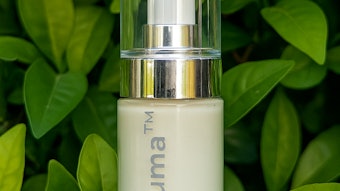Much of any given Saturday night at my house is spent determining what horrible black-and-white B movie to watch—in fact, more time is spent trying to find the right movie than I actually spend watching the winner before falling asleep. A recent Saturday featured the Roger Corman gem “The Wasp Woman,” starring Susan Cabot as Janice Starlin, the founder and owner of a successful eponymous cosmetics company. Problems at the company are quickly evident, however, as Ms. Starlin has been the face of the company, and her aging visage is linked to declining sales.
Turn to scientist Eric Zinthrop, who’s ignored entomological accuracy and extracted enzymes from the royal jelly of the queen wasp, which can reverse the aging process. Starlin wants the formula and funds ongoing research—provided she can serve as the human test subject. Skip some blah blah blah exposition about her intentional undermining of test protocols, Zinthrop’s discovery that test animals are becoming violent and the car accident that prevents him from warning Starlin, and cut to a scene where she looks 20 years younger but is now prone to transformations into a hideous bug lady thing with murderous rages.
As I fell in and out of a doze, the thought occurred to me that Janice Starlin Enterprises is going to be hit with an FDA warning letter regarding drug like claims and the “promise of a miracle” if this product ever goes to market. (I said something aloud, too, but as my family is not in the industry and generally doesn’t pay much attention to what I say anyway, and the comment was ignored.) Turns out, my immediate concerns about letters were unnecessary. More blah blah blah, and Starlin dies a horrible and ironic death involving acid and a window—the wasp woman, it turns out, can’t fly.
Although I and the fictional company had no need to worry about an FDA letter, you may at least want to review recent, nonfiction FDA warnings to real beauty companies. In his January 2013 column in GCI sister publication Cosmetics & Toiletries, “Regulatory Review—US and Canada Updates: Canadian Cosmetic Harmonization and the FDA’s Claim Crackdown,” David Steinberg writes that the FDA issued warning letters to well-known global brand owners, referring to product claims made on company websites positioning products as unapproved new drugs.
Among the claims that garnered a letter—and I’m thinking of you here, Ms. Starlin—is “boosts the activity of genes and stimulates the production of youth proteins.” The FDA considers such claims, writes Steinberg, to be drug-related under its definition: “intended to affect the structure or any function of the body of man or other animals.” He also notes that some of the claims cited are clearly drug claims despite some having been considered “cosmetic” claims, and the boundaries of claims have stretched until the warning letters arrived. Further, he notes, this has triggered lawsuits for false advertising claims that, in California, can lead to class action lawsuits.
Steinberg’s column, which includes a list of the claims hit with FDA letters, is available at www.CosmeticsandToiletries.com/magazine/pastissues by clicking on the January 2013 issue. Meanwhile, I’d like to suggest checking out “The Wasp Woman” on Netflix (I’ll be looking for Susan Cabot in “The Viking Women and the Sea Serpent” next). And for those of you thinking about adding an entomologist to your R&D staff—just know, that addition could come with its share of ups and downs.










